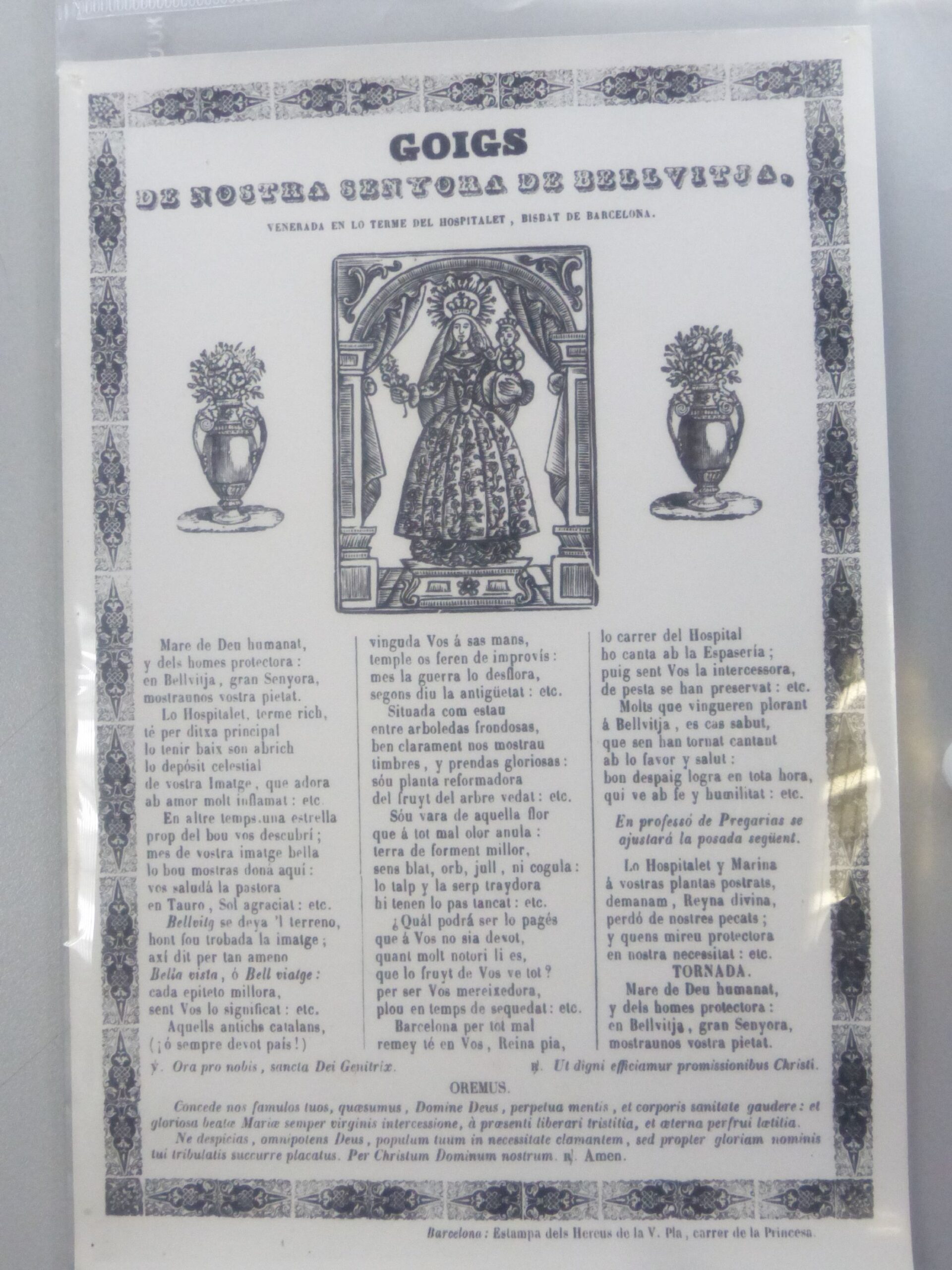NUESTRA HISTORIA:
Nos encontramos en pleno siglo XV donde los barcelonenses padecían de diversas pestes expandidas por toda Europa en el siglo anterior. El movimiento Renacentista aparece gracias a países fronteros, culpable de que el cristianismo se viese des de un punto más maternal, por eso, tanta devoción por la Virgen María.
Una de las ermitas más importantes que veneraban a la virgen maría en aquella época, fue la Ermita de Bellvitge, oratorio construido en una necrópolis dividida en dos tiempos cronológicos diversos. No obstante, en el 1375, el responsable del cuidado de la iglesia (Pau Genover), convirtió la ermita en un pequeño Hospital, del cual, proviene el nombre del municipio Hospitalet de Llobregat. Luego de este acontecimiento, Mare de Déu de Bellvitge, se empezó a venerar en dos capillitas construidas en Barcelona, una de las cuales, era Nuestra Señora de Déu de Bellvitja.
OUR HISTORY:
We are in the 15th century where the people of Barcelona suffered from various plagues that spread throughout Europe in the previous century. The Renaissance movement appears thanks to bordering countries, responsible for Christianity being seen from a more maternal point of view, hence, so much devotion to the Virgin Mary.
One of the most important hermitages that venerated the Virgin Mary at that time was the Bellvitge Hermitage, an oratory built in a necropolis divided into two different chronological periods. However, in 1375, the person responsible for the care of the church (Pau Genover) converted the hermitage into a small Hospital, from which the name of the municipality of Hospitalet de Llobregat comes. After this event, Mare de Déu de Bellvitge began to be venerated in two little chapels built in Barcelona, one of which was Nuestra Señora de Déu de Bellvitja.
¿DE DONDE PROVIENE EL NOMBRE: LA BELLVITJA?
Nuestra querida provincia costera, era ciudad de marineros y campesinos, fieles devotos a la Virgen Mare de Déu, motivo suficiente para construir múltiples capillitas en el emblemático barrio histórico de Barcelona, entre ellas, Mare de Déu del Bell Viatge, capilla por la que tenían especial devoción ya que, según los marineros les daba “Bon Viatge”, que, con el tiempo, se convirtió en “Bellvitge”.
Our beloved coastal province was a city of sailors and farmers, faithful devotees of the Virgin Mare de Déu, reason enough to build multiple little chapels in the emblematic historic neighborhood of Barcelona, among them, Mare de Déu del Bell Viatge, a chapel for which they had special devotion since, according to the sailors, he gave them “Bon Viatge”, which, over time, became “Bellvitge”.

